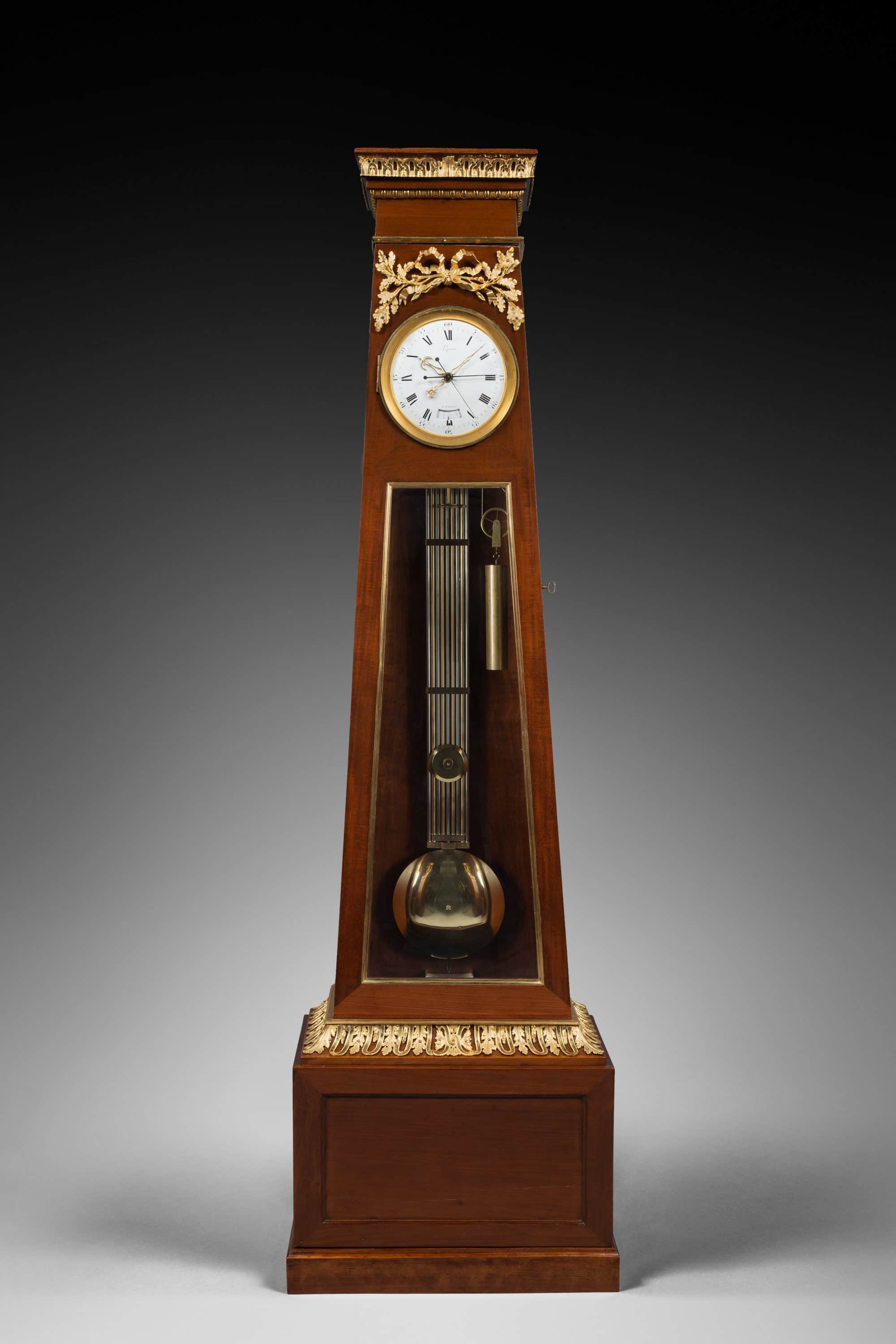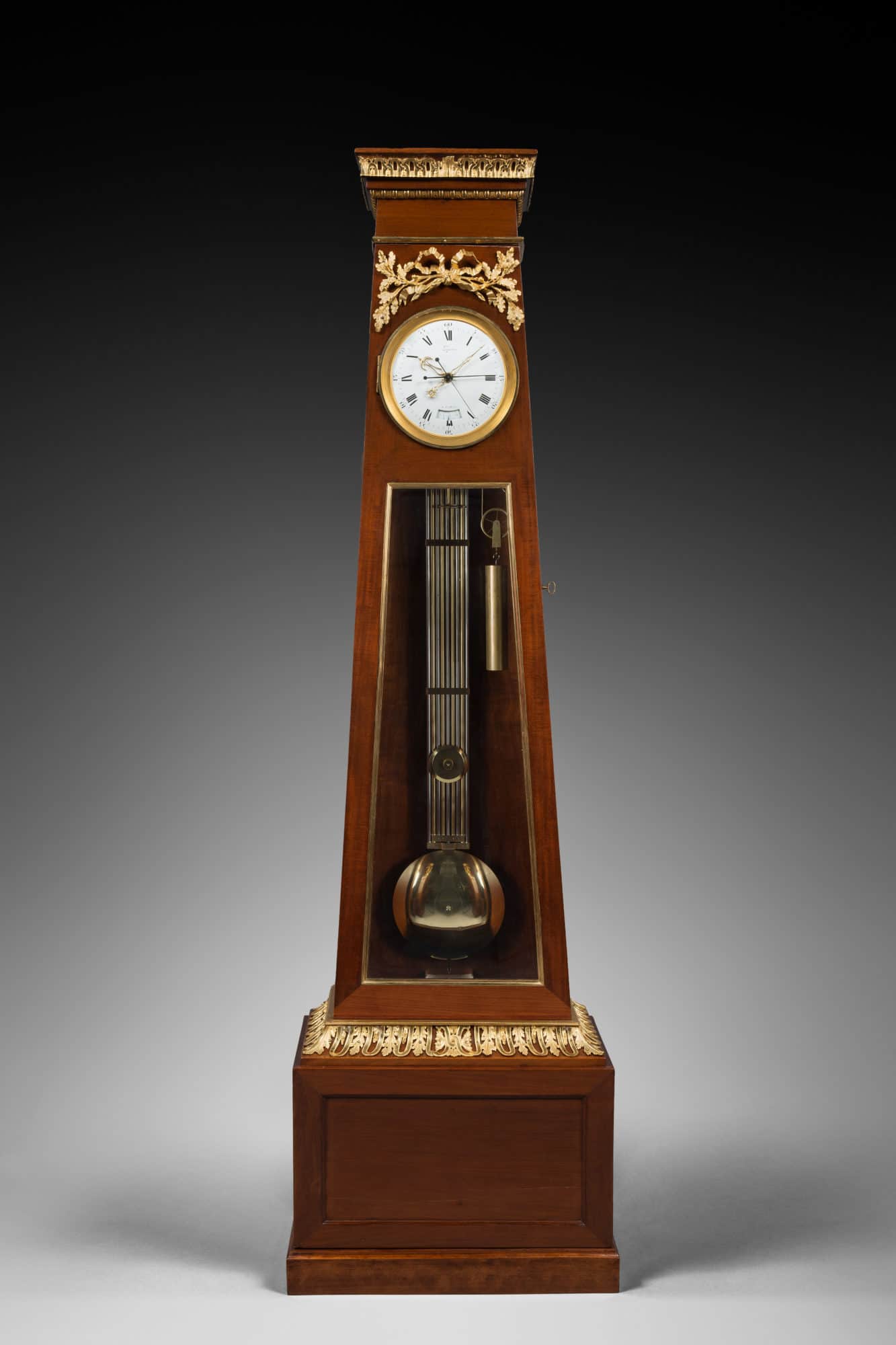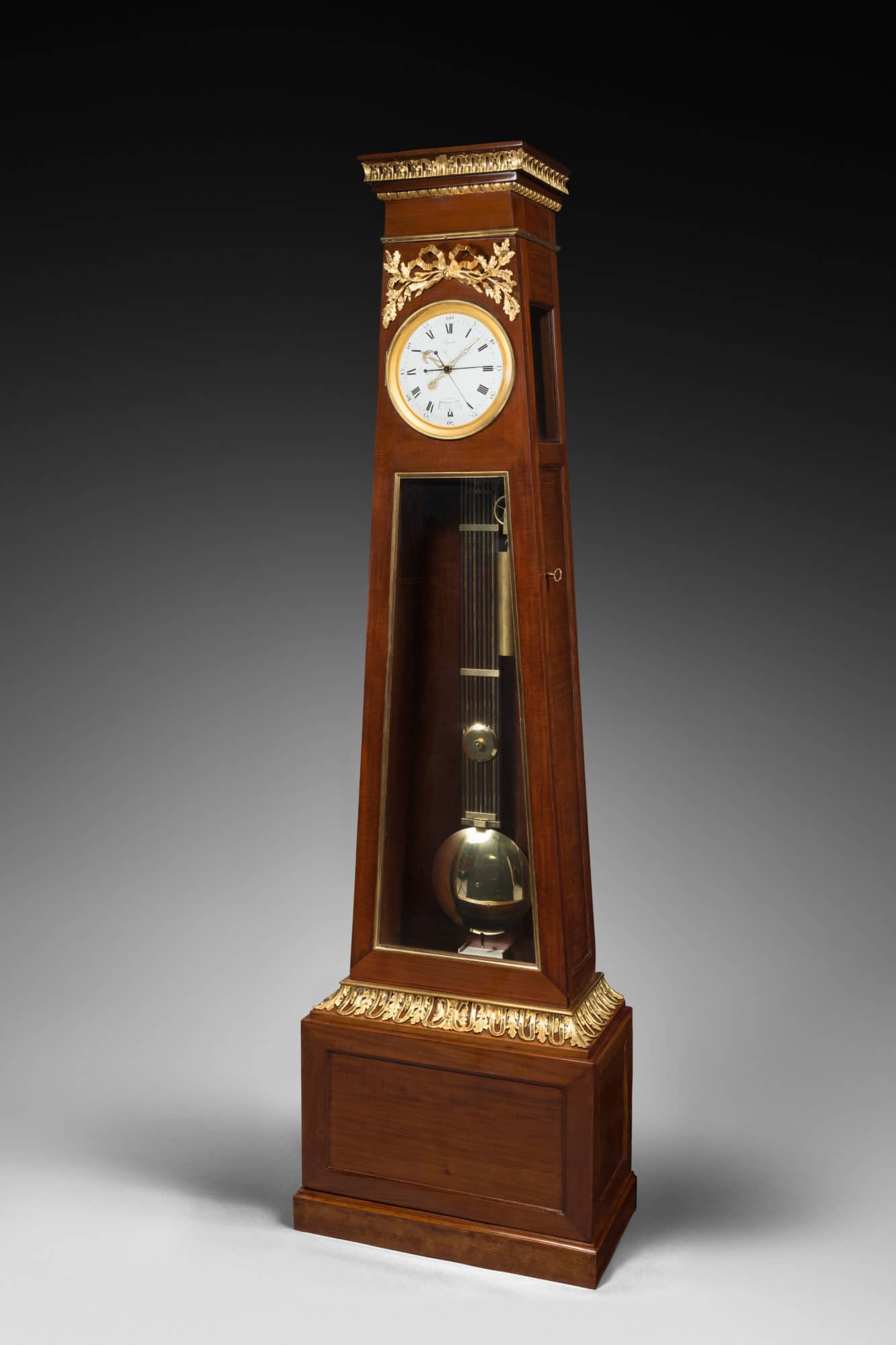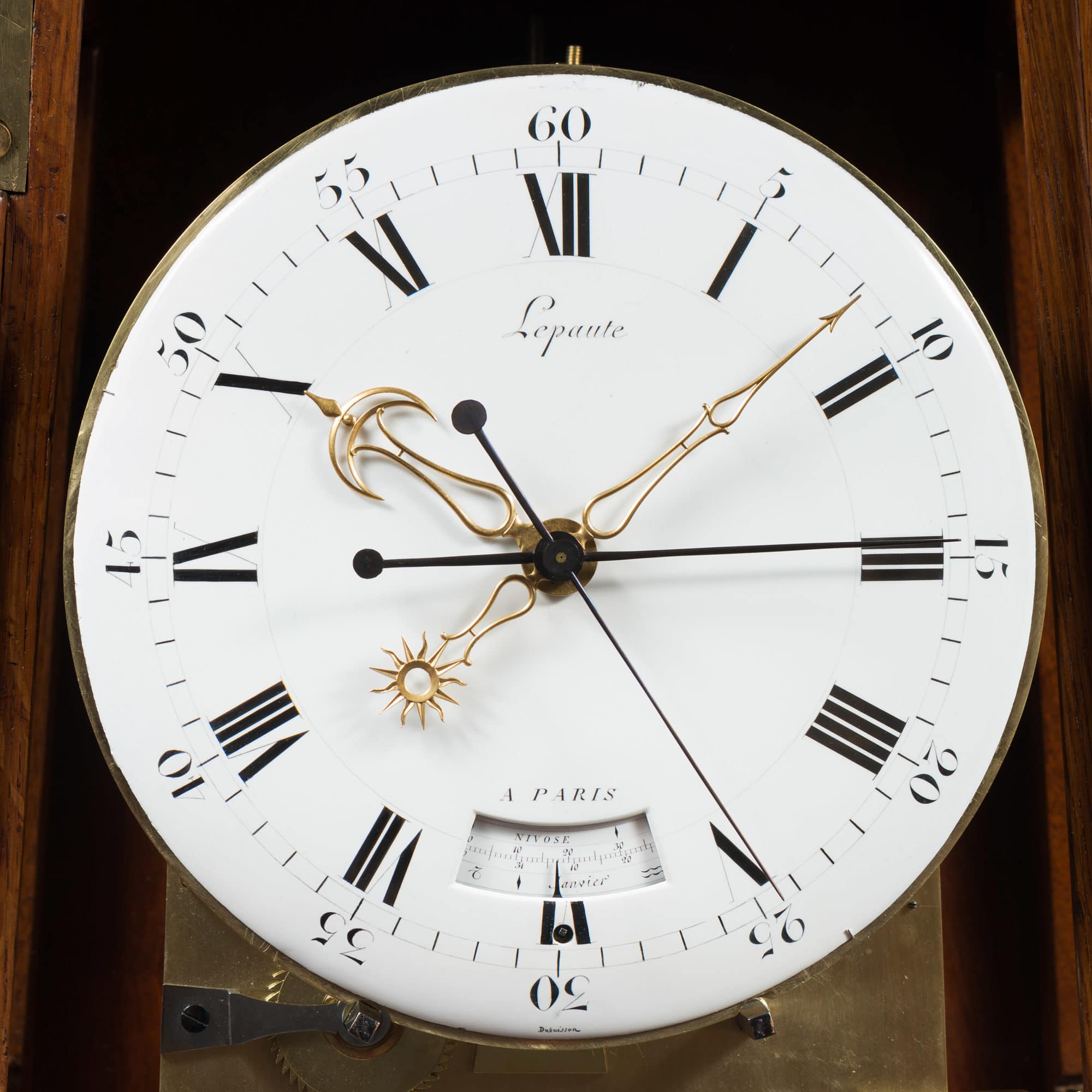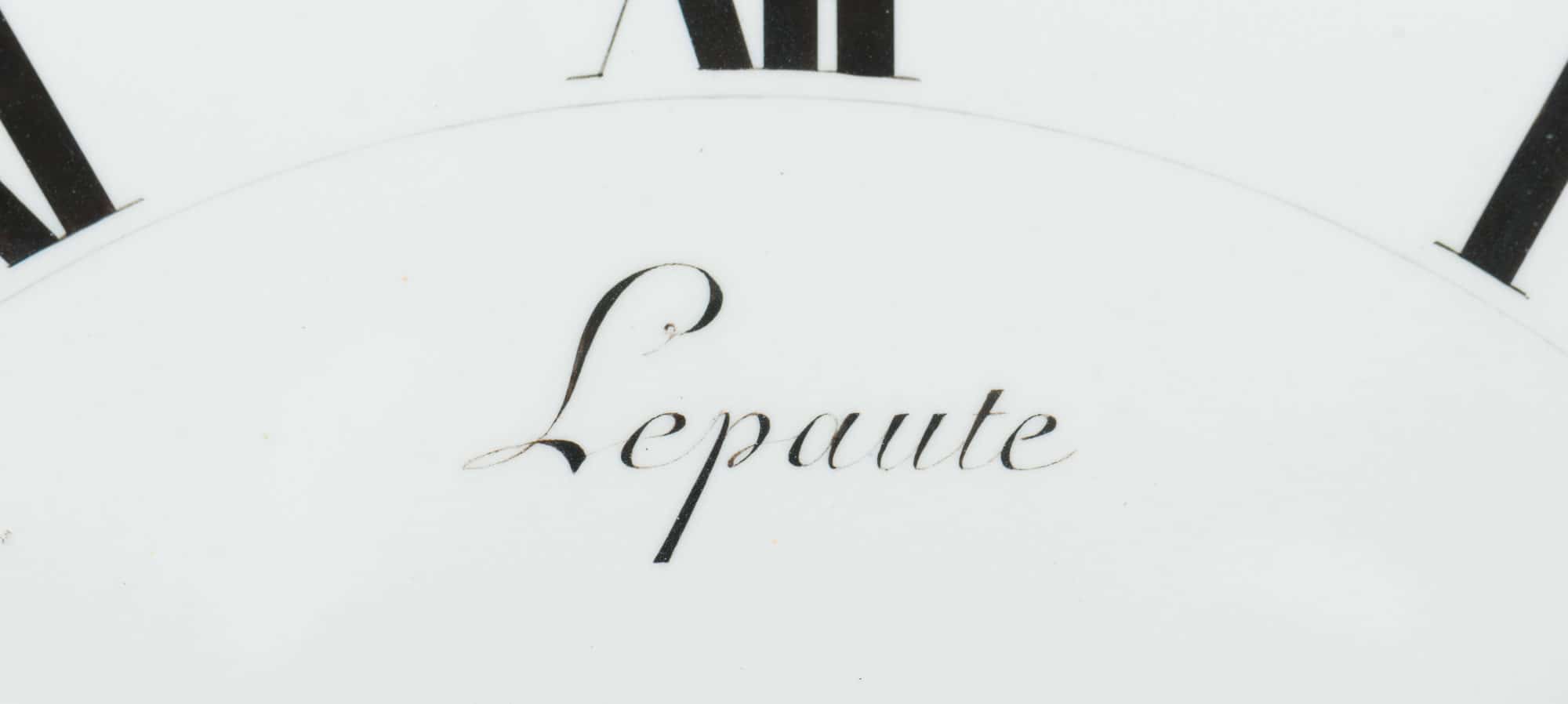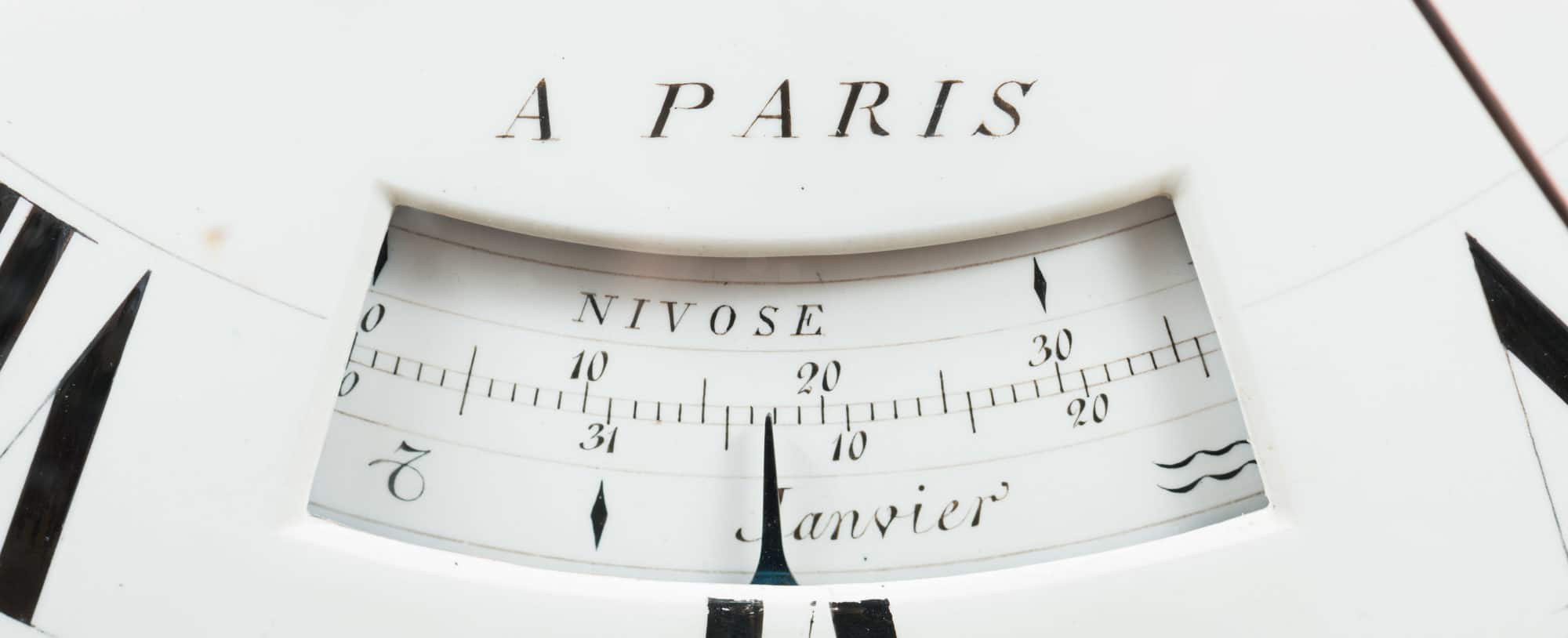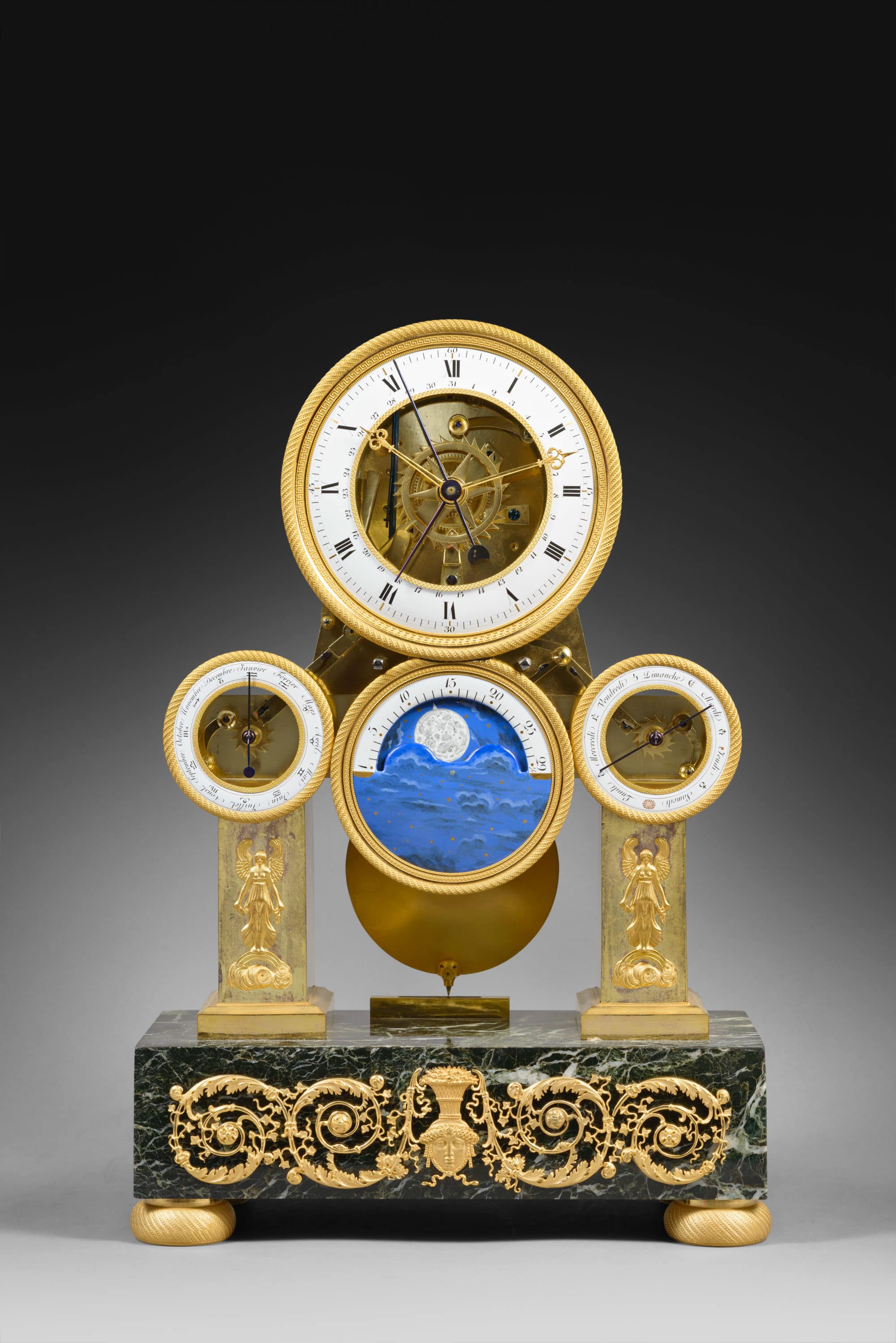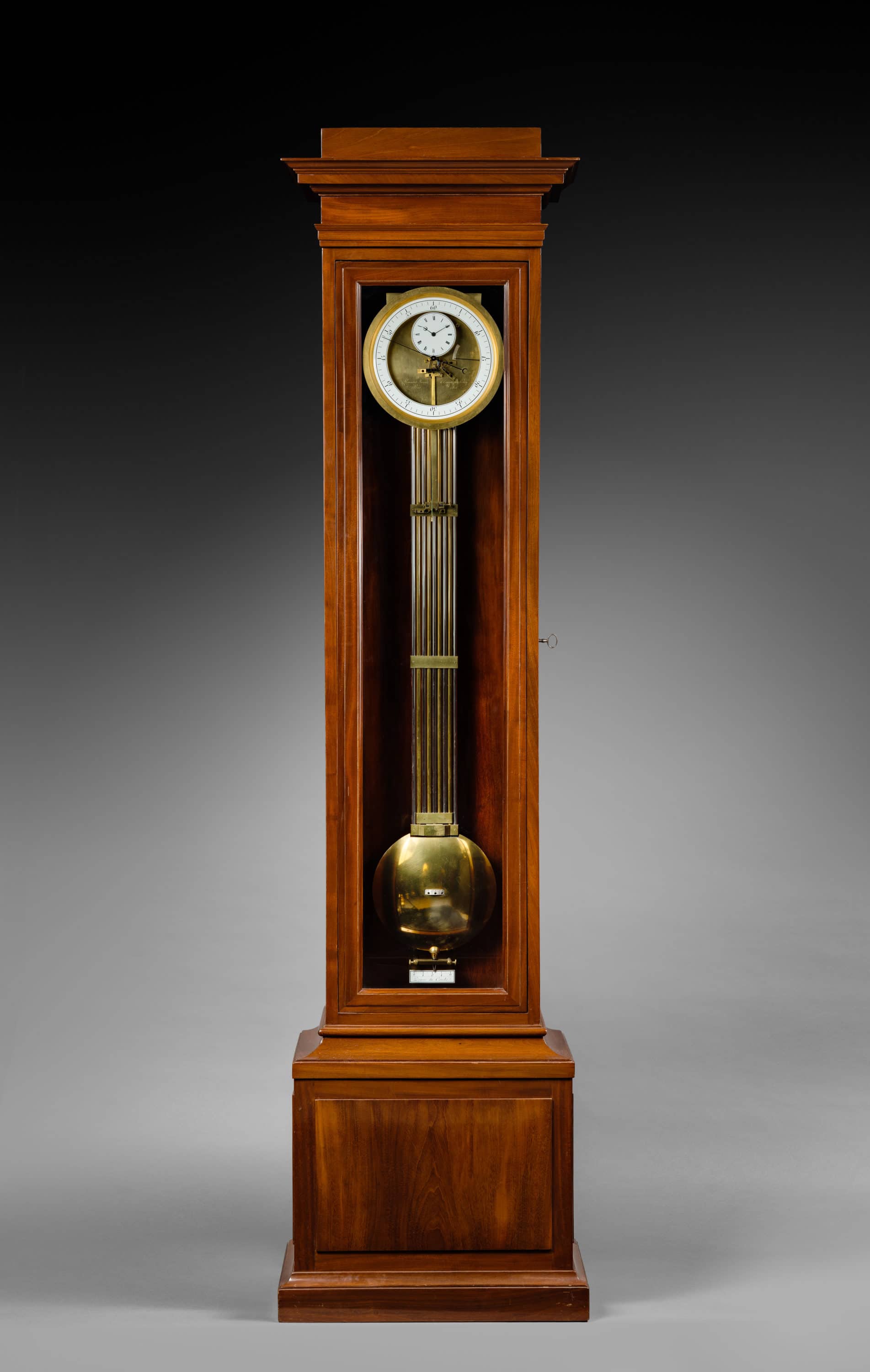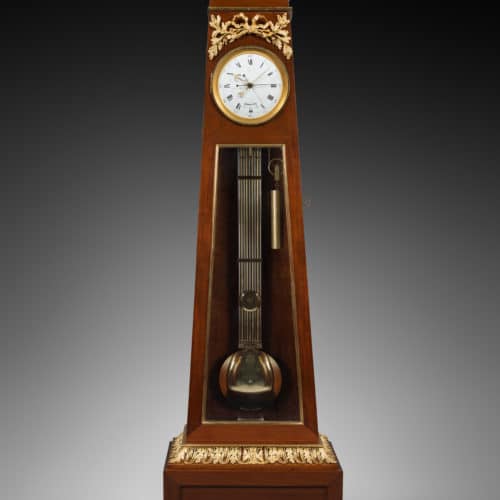Rare Floor Regulator with Equation of Time and Gregorian and Republican Calendars

“Lepaute à Paris”
The enamel dial by Etienne Gobin, known as Dubuisson
Paris, early Empire period, circa 1805
The round white enamel dial is signed “Lepaute à Paris” and “Dubuisson”, for Etienne Gobin, one of the most renowned Parisian enamelers of the time and the colleague and principal rival of Joseph Coteau. It indicates the Roman numeral hours and Arabic five-minute intervals, the seconds, the equation of time (the difference between mean time and true, or solar, time). An aperture in the lower portion of the dial with a steel pointer contains a double annual calendar, with both Republican and Gregorian indications. The three week-going movement, signed “Lepaute Horloger de l’Empereur à Paris”, strikes the hours and half hours; it has a heavy bimetallic balance with a pointer on its bob to indicate the « degrés du cercle » along a band with a double graduation of 0 to 2. The mahogany and mahogany-veneered obelisk-shaped architectural case is partially glazed. It has a molded protruding cornice and a solid base with plain reserves. It is set on a slightly protruding quadrangular plinth. The regulator is adorned with finely chased gilt bronze mounts including leaf and egg-and-dart friezes, as well as crossed, ribbon-tied oak branches.
Discover our entire collection of antique regulator clocks for sale online or at the gallery.
After the Revolution, new ways of measuring time were introduced – the Revolutionary calendar and the decimal system. The Revolutionary calendar remained in vigor for several years, until the “an XIV” (1806); the decimal system was much shorter-lived. Adopted by decree on November 24, 1793, the new system replaced the old Gregorian calendar with a new one, called the “Republican calendar”. In the new calendar, the day was divided into ten hours, which themselves were divided into one hundred minutes, each made up of one hundred seconds. This system soon met with resistance; lovers of horology, and the public in general, found it difficult to understand. Some clockmakers devised ingenious and often elaborate systems incorporating the two calendars.
Given the date the present clock was made, its creator was very likely Pierre-Basile Lepaute, known as Sully-Lepaute (1750-1843).
Pierre-Basile Lepaute (1750 - 1843)
Pierre-Basile Lepaute, known as Sully-Lepaute, was one of the most important Parisian clockmakers of the late 18th and early 19th centuries. In the mid 1760’s he went to work with his uncles, who were also clockmakers, and began his training in the family workshop. In the early days he was in partnership with his uncle and cousin, in 1789 becoming sole owner of the workshop. Toward the end of the 18th century, he and his nephew Jean-Joseph Lepaute founded a new company that was active until 1811 and won a silver medal at the 1806 Exposition des Produits de l’Industrie. In 1811, his nephew opened his own workshop, while Pierre-Basile and his son Pierre-Michel (1785-1849) founded a new firm called “Lepaute et fils”. For several decades they were the principal suppliers of clocks to the Imperial and Royal Garde-Meuble; they were named, successively, Horloger de l’Empereur and Horloger du Roi.
Dubuisson (1731 - after 1820)
Etienne Gobin, known as Dubuisson, was one of the most talented Parisian enamellers of the reign of Louis XVI and the Empire period. Born in Luneville in 1731, he began his career as a painter on porcelain in Strasbourg and Chantilly. He then moved to Paris and worked at the Royal Sèvres porcelain manufactory from 1756 to 1759, specializing in the decoration of watch cases and clock dials. In the 1790s, his workshop is mentioned as being in the rue de la Huchette, then the rue de la Calandre around 1812. He appears to have retired in the early 1820s. He mostly signed his work “Dubuisson” or “Dub”, sometimes “Dubui”. Having worked with the most renowned clockmakers of his time, including Robert Robin, Kinable, and the Lepautes, Dubuisson was the main rival of Joseph Coteau. Specializing in watch cases and enamel dials, he was famous for his exceptional talent and his ability to render detail. His body of work, always of the highest quality, is considerable. To mention only a few of his pieces, some clocks bearing his signature are today in Pavlovsk Palace near Saint Petersburg, in the Louvre Museum in Paris, and in the Royal British Collection.
